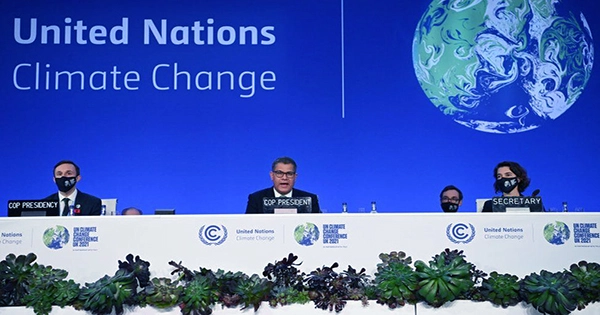Despite the fact that the Paris Agreement was signed less than seven years ago, a new analysis reveals that the world is on the approach of breaking one of the treaty’s main temperature limitations for the first time. According to the World Meteorological Organization (WMO), the chances of global temperatures rising to 1.5°C (2.6°F) over pre-industrial levels at least once by 2026 are around 50:50. With practically all nations agreeing to prevent a disastrous rise of 2°C by the end of this century, the 1.5°C barrier indicates the lower border of allowable growth throughout the globe.
Allowing mercury to reach these levels will very certainly result in a cascade of climatic repercussions, such as rising sea levels, more droughts and wildfires, and more extreme weather occurrences. The WMO’s assessment, based on data analysis from the world’s major climate research institutions, projects that global temperatures would range between 1.1 and 1.7°C over pre-industrial levels between 2022 and 2026, with a 48 percent likelihood of breaking the 1.5°C limit at least once.

“Our most recent climate projections imply that global temperature rise will continue, with a likelihood that one of the years between 2022 and 2026 may reach 1.5°C over pre-industrial levels,” lead author Dr. Leon Hermanson said. “A single year of over 1.5°C does not imply we’ve broken the Paris Agreement’s iconic barrier, but it does show that we’re getting closer to a situation where 1.5°C may be surpassed for a protracted period.” The likelihood of exceeding this dreadful milestone was estimated to be near to zero as recently as 2015, but it has subsequently risen at an alarming rate.
Average global temperatures were 1.1°C above the baseline in 2021, necessitating immediate action to decrease emissions and reverse the increasing trend. “The 1.5°C number is not some arbitrary figure. It’s more of a predictor of when climate impacts will become more destructive to individuals and the earth as a whole,” said WMO Secretary-General Professor Petteri Taalas.
“Temperatures will continue to increase as long as we continue to generate greenhouse gases.” Along with this, our seas will continue to warm and grow more acidic, sea ice and glaciers will melt, sea level will rise, and our weather will become more severe.” According to the analysis, there is a 93 percent possibility that at least one of the following five years will surpass 2016 as the warmest on record, with the period 2022 to 2026 being equally likely to be warmer than the previous five-year period.
Worryingly, the analysis predicts that throughout this timeframe, Arctic temperatures would climb three times faster than the world average. The loss of Arctic sea ice is anticipated to have dramatic knock-on effects, resulting in more unpredictable weather patterns and an increase in ocean temperatures, given the importance that the Polar Regions play in controlling Earth’s climate. Professor Taalas summarized the threat to mankind by saying, “Arctic warming is disproportionately high, and what happens in the Arctic impacts all of us.”
















